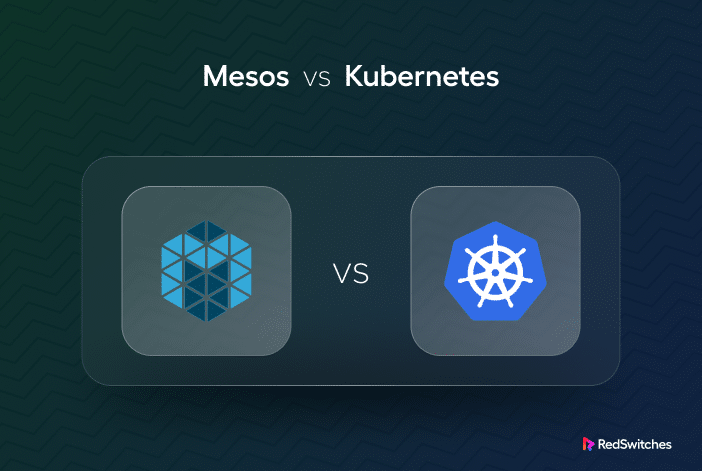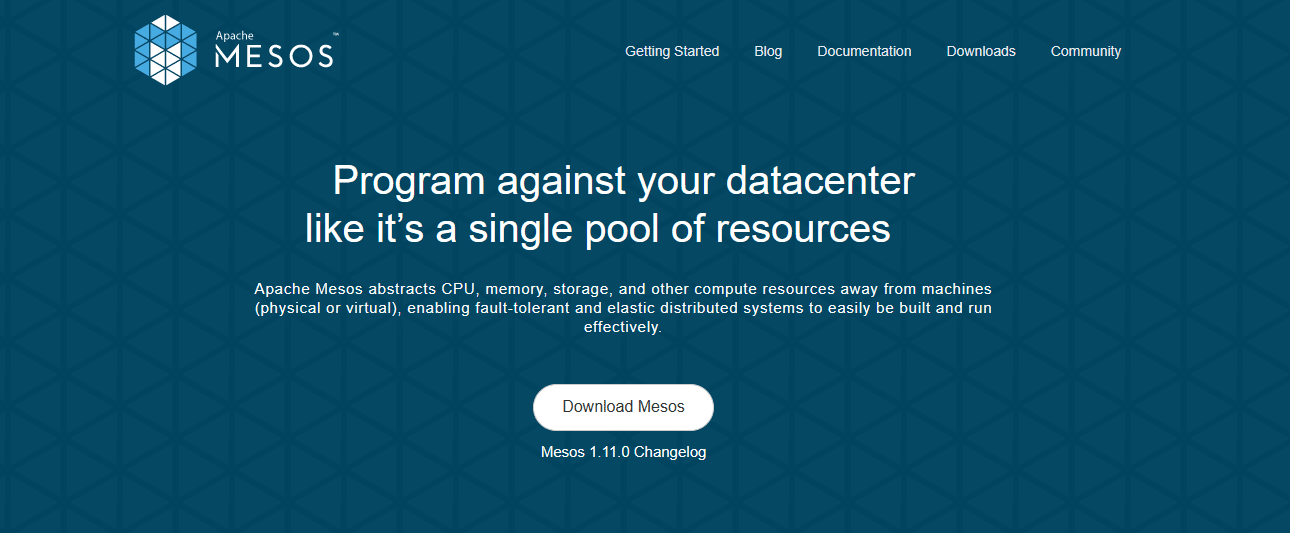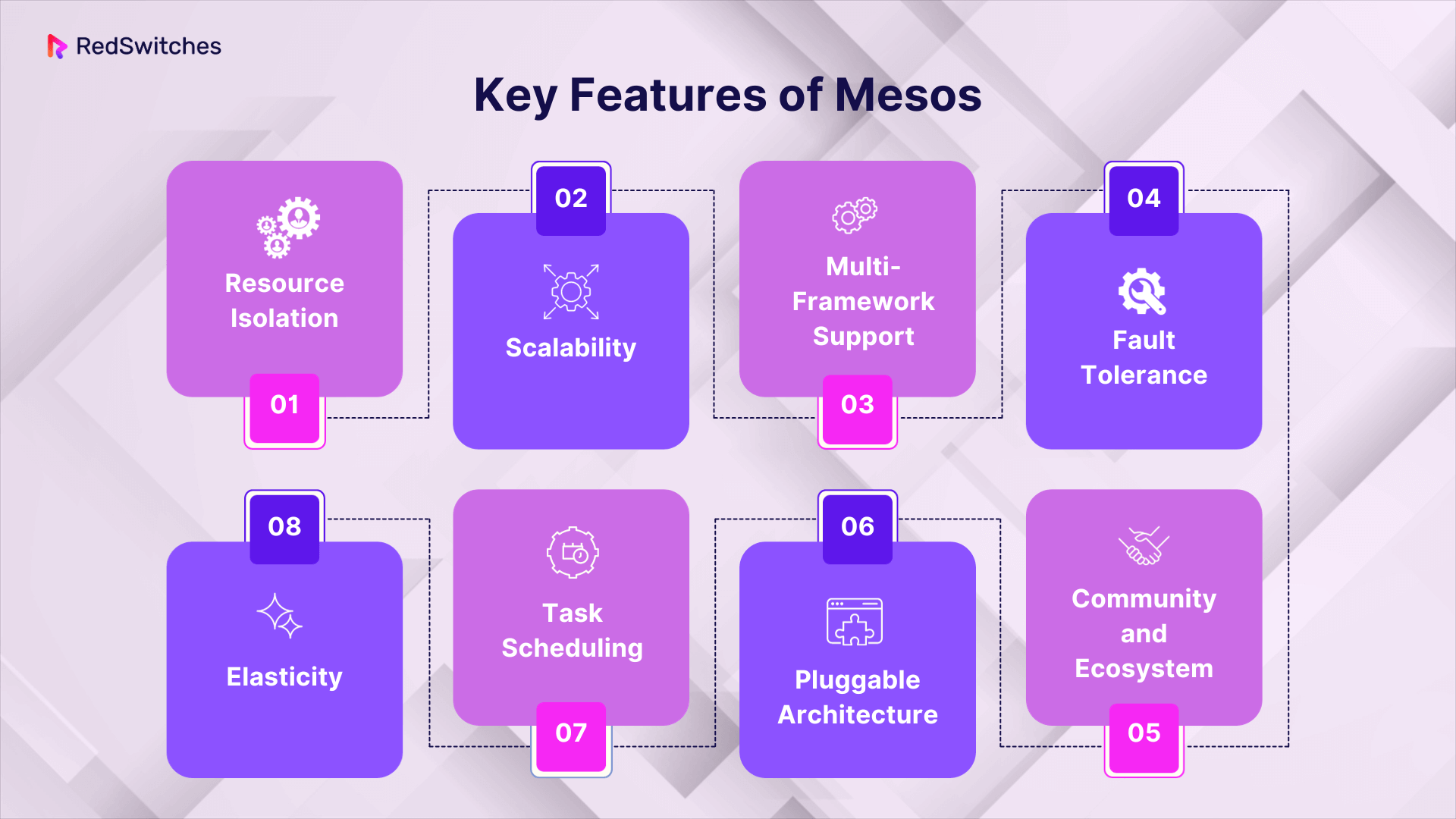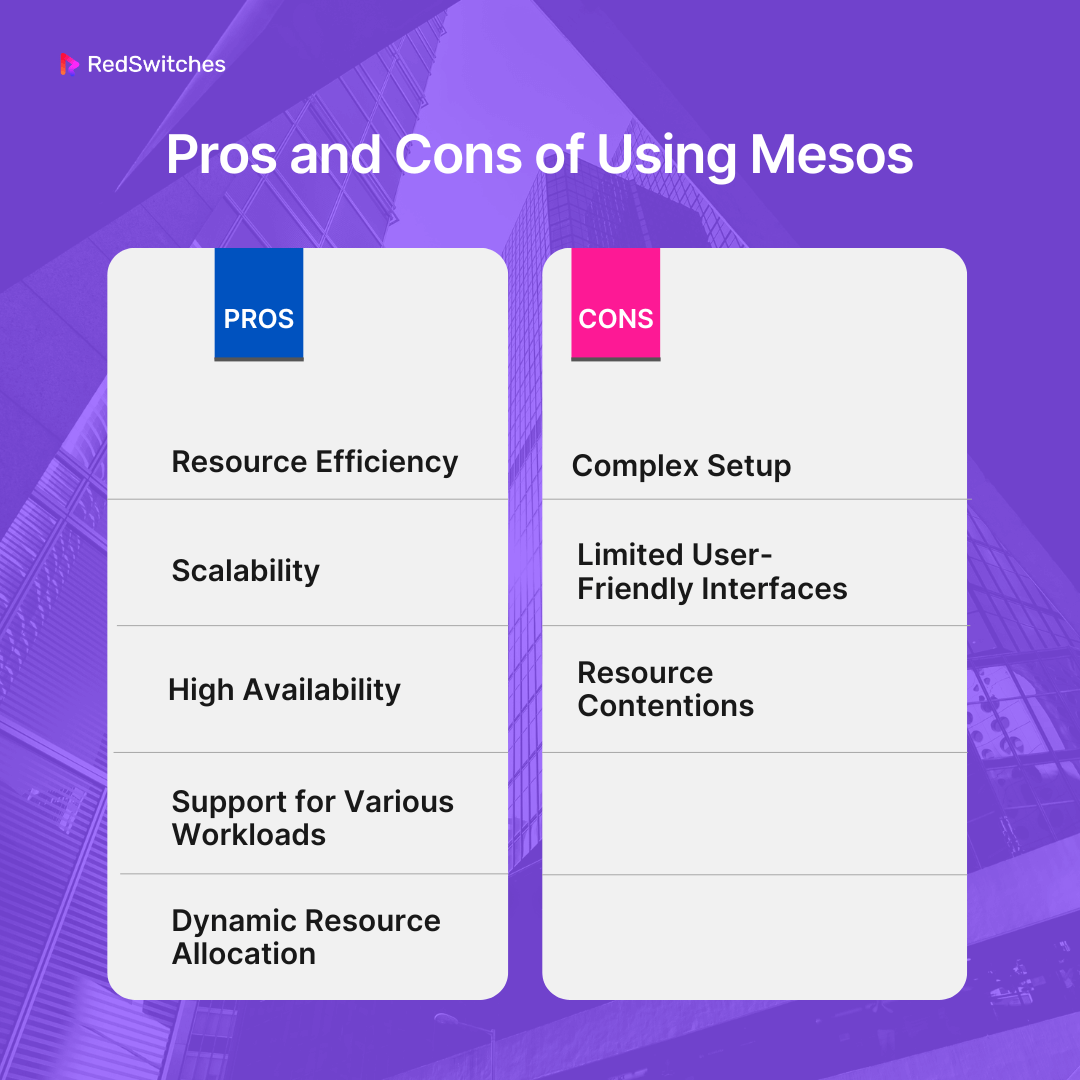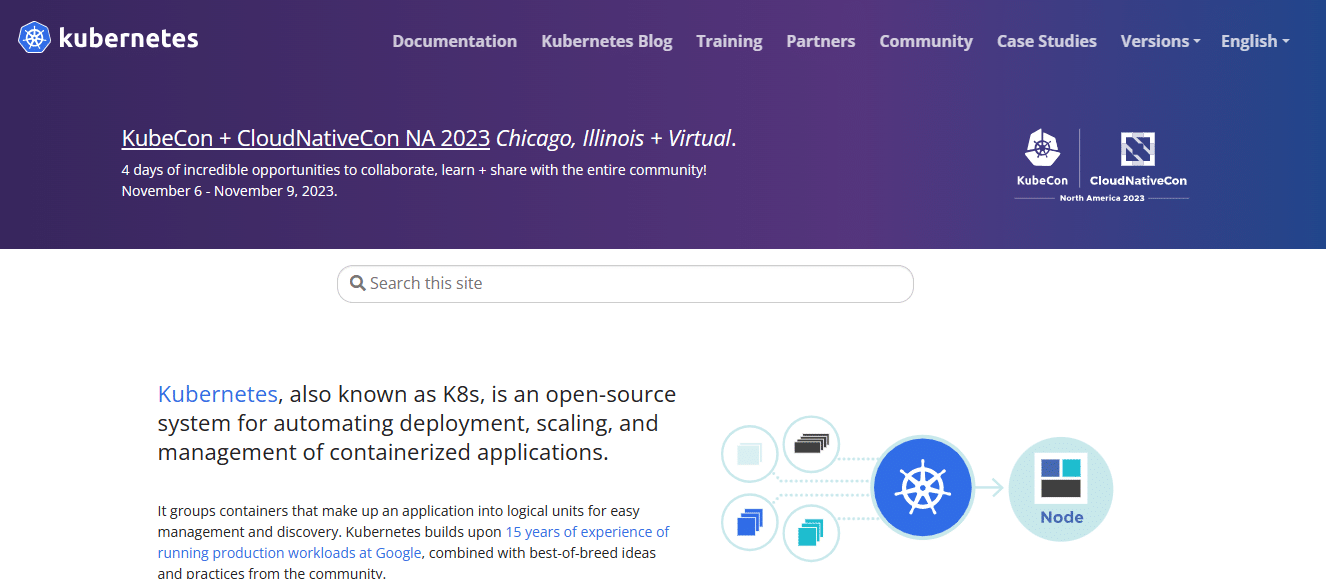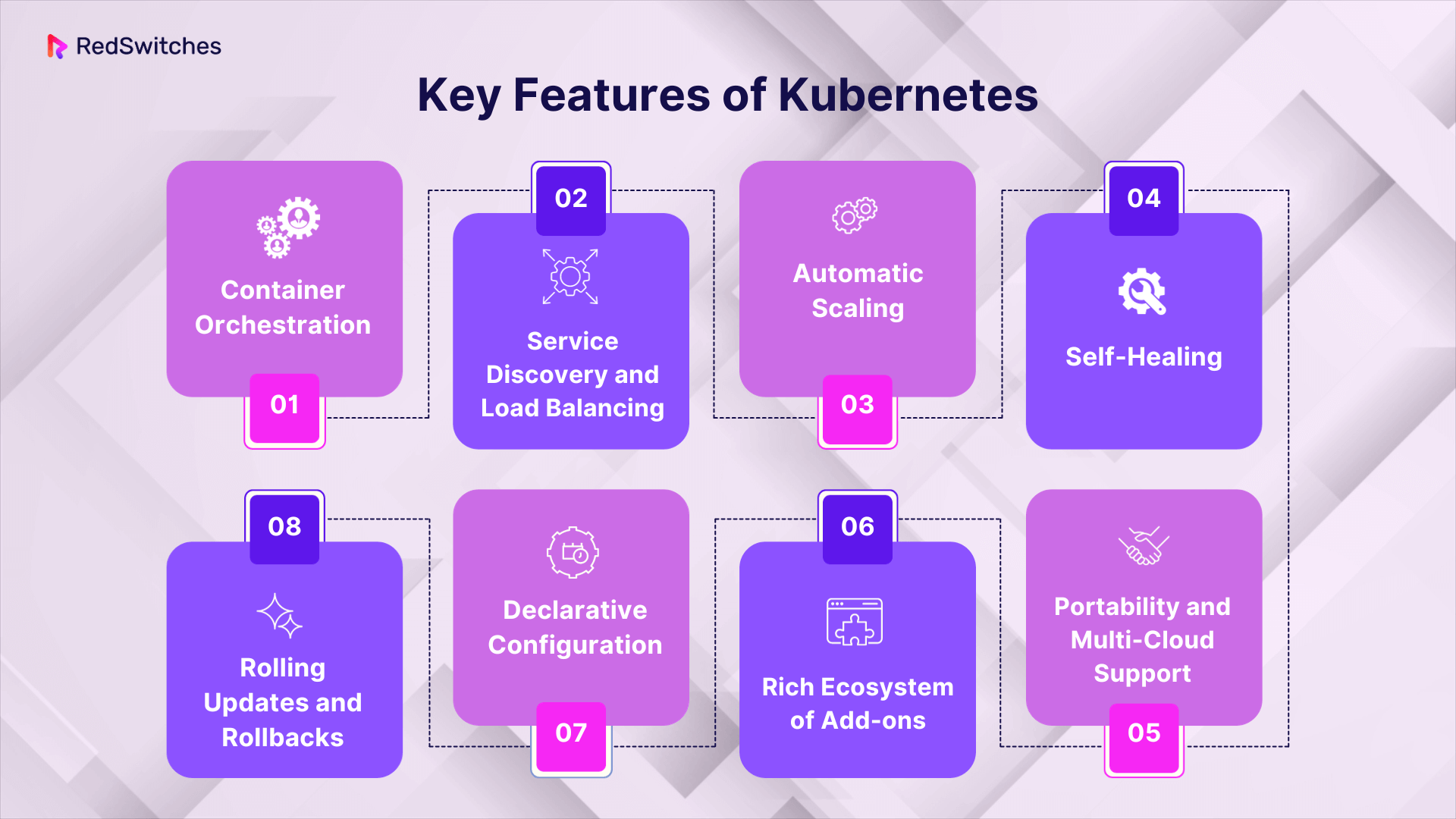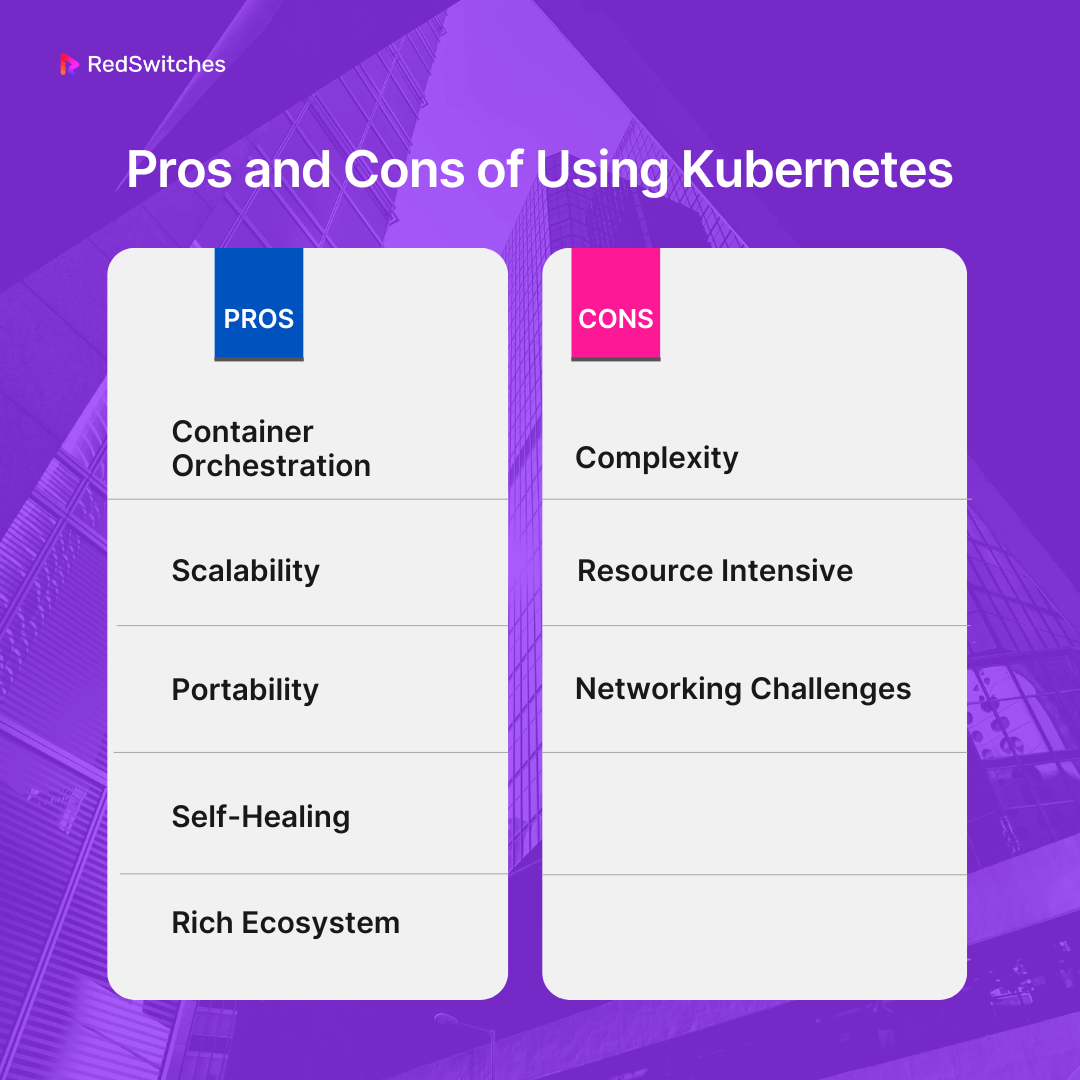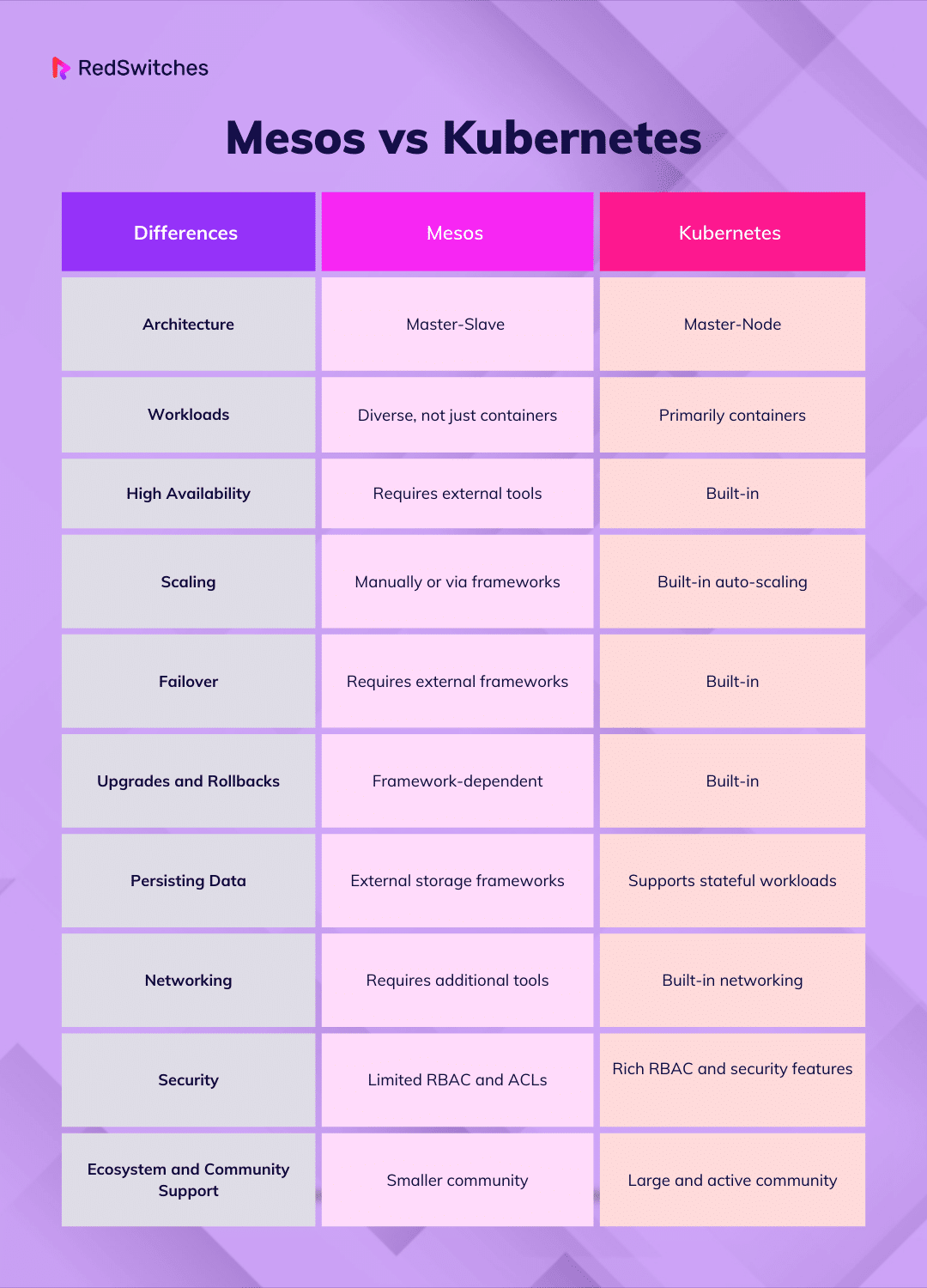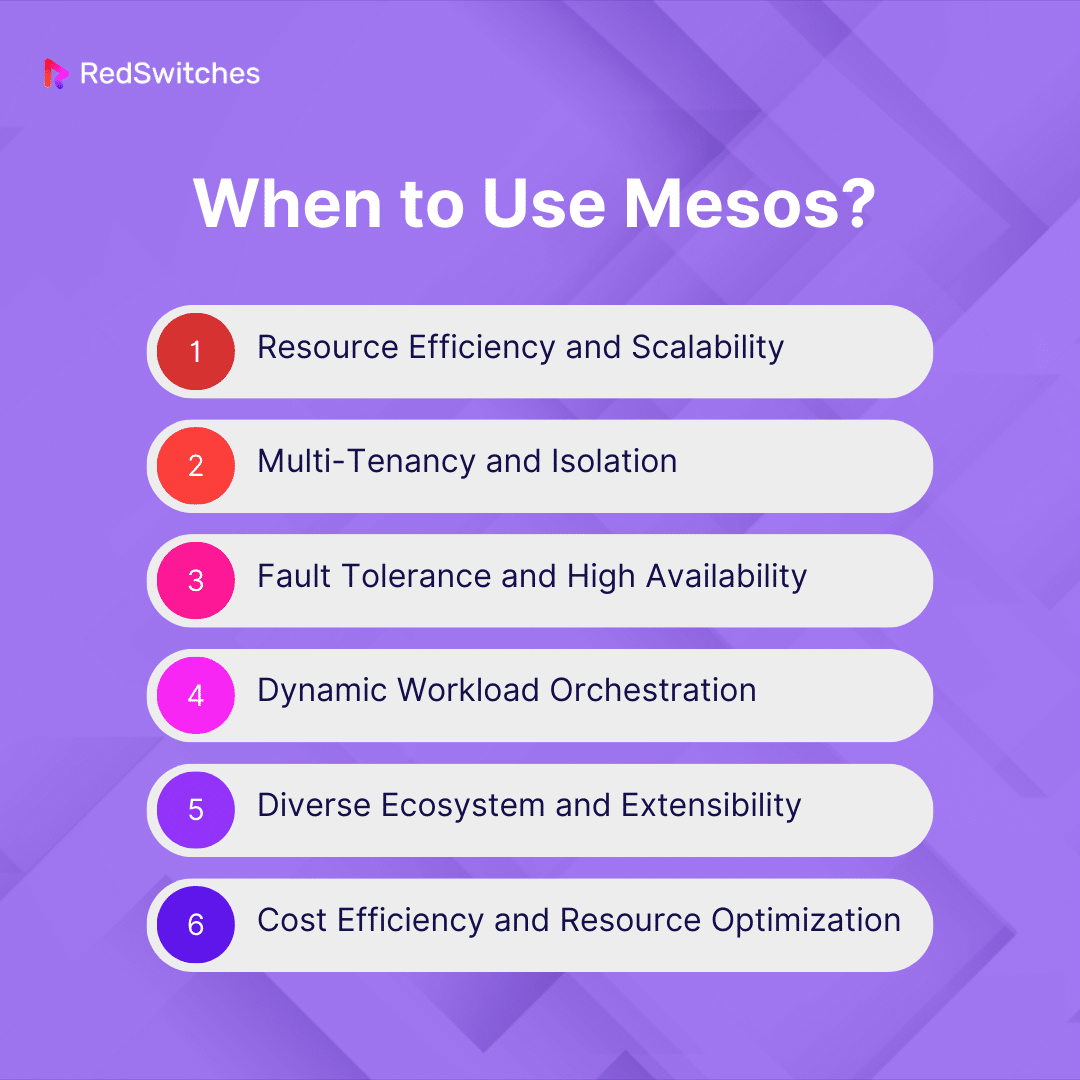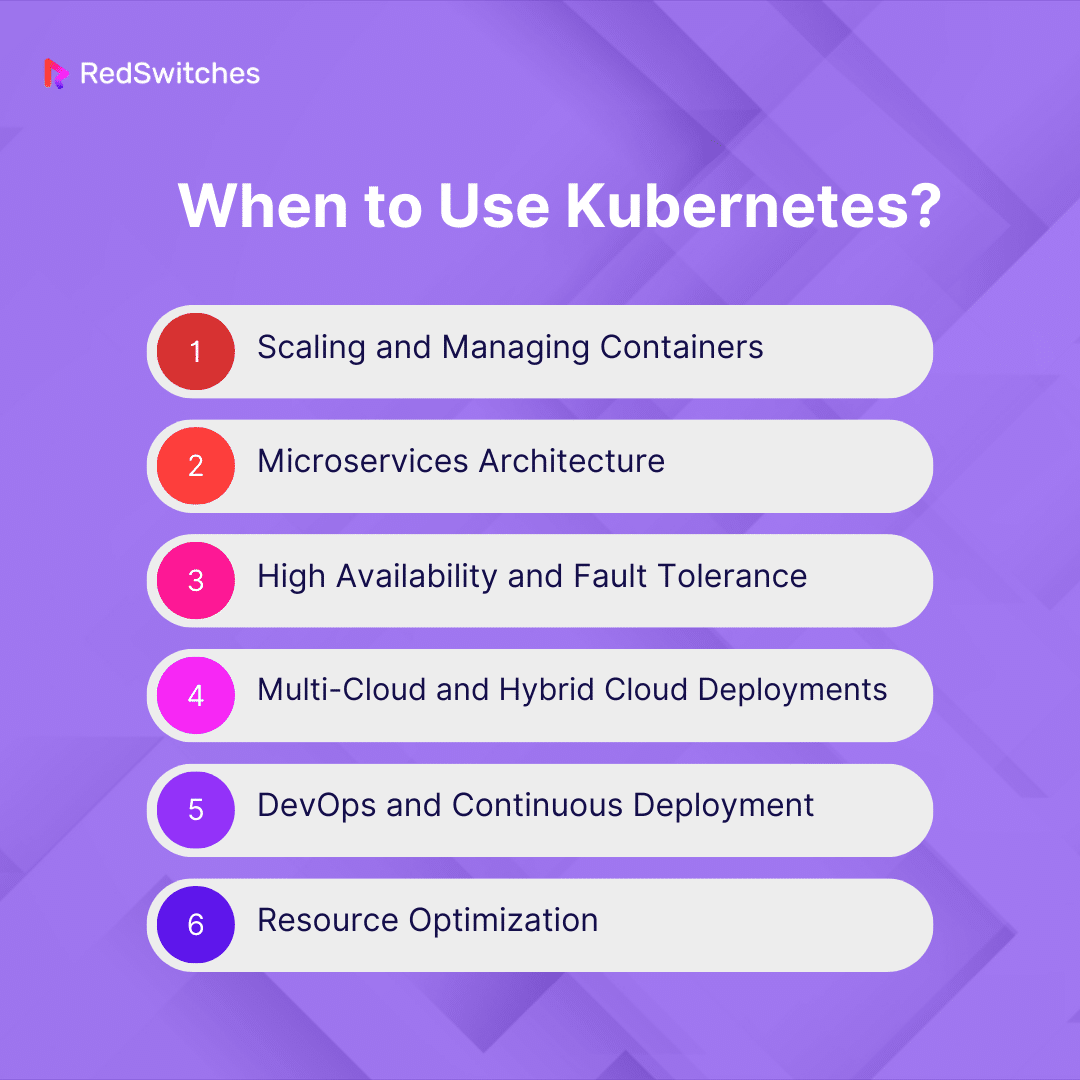The container orchestration and resource management realm bring forward two heavyweight contenders: Apache Mesos and Kubernetes. These robust platforms have garnered widespread attention for their ability to streamline containerized applications and manage resources efficiently.
According to Statista, around 60% of organizations will have adopted Kubernetes in 2022. While Kubernetes may be more popular, it may not be a suitable container orchestration platform for some developers. It is critical to compare Apache Mesos vs Kubernetes to ensure you choose the best container orchestration platform.
This blog will compare Kubernetes vs Apache Mesos and dive into the intricacies of Mesos vs Kubernetes, exploring their key features, advantages, and differences. Whether you’re an IT professional looking to optimize your infrastructure or a developer seeking the right orchestration solution, this comparison of Mesos vs Kubernetes will help you make an informed decision.
Let’s dive in!
Table Of Contents
- What is Apache Mesos?
- What is Kubernetes?
- Mesos vs Kubernetes: Key Differences
- When to Use Mesos?
- When to Use Kubernetes?
- Conclusion
- FAQs
What is Apache Mesos?
Credits: Apache Mesos Website
Before we dive into the differences between Mesos vs Kubernetes, it is important to discuss their definitions.
Apache Mesos is a renowned open-source cluster management system that optimizes resource utilization and offers efficient, fault-tolerant distributed computing environments.
It acts as a central controller that abstracts and pools computing resources such as CPU, memory, and storage across a cluster of machines, making it easier to manage and scale large-scale applications and services.
Mesos offers dynamic allocation of resources to applications. This ensures that workloads can be distributed while maintaining high availability and fault tolerance. It is particularly valuable for data centers and cloud environments, where diverse workloads must coexist and share resources effectively.
Mesos supports various container orchestration systems, like Docker and Kubernetes, making it a versatile and powerful tool for orchestrating and managing complex distributed systems.
Key Features of Mesos
Resource Isolation
Mesos provides strong resource isolation by allocating resources to applications to prevent contention and ensure reliable performance. This feature allows multiple applications to coexist on the same cluster without interfering with each other, ensuring stable and predictable performance for all workloads.
Scalability
One of the standout features of Mesos is its ability to scale smoothly. Whether you’re dealing with a small cluster or a massive data center, Mesos can handle it. It efficiently manages thousands of nodes and dynamically scales resources based on demand, ensuring your applications can grow without a hitch.
Multi-Framework Support
Mesos supports multiple frameworks, including Apache Hadoop, Apache SparkDocker, etc. This versatility means you can run various types of workloads on the same cluster, simplifying resource management and maximizing resource utilization.
Fault Tolerance
Mesos is built with high availability in mind. It offers robust fault tolerance mechanisms, including leader election and distributed state replication, to ensure that cluster management remains reliable despite hardware failures or network issues.
Elasticity
Mesos enables auto-scaling, allowing your cluster to adapt to changing workloads dynamically. When demand surges, Mesos can allocate additional resources to meet the demand. When demand decreases, it can free up resources, optimizing resource usage and cost efficiency.
Task Scheduling
Mesos provides a powerful task-scheduling mechanism that allows you to specify how tasks should be distributed across the cluster. This fine-grained control ensures that your applications are deployed and managed according to your requirements, improving resource utilization and application performance.
Pluggable Architecture
Mesos offers a pluggable architecture that allows you to integrate it with various external components and services. This extensibility makes it easy to integrate Mesos with your existing infrastructure and customize it to meet your specific needs.
Community and Ecosystem
Mesos boasts a vibrant and active open-source community, resulting in a rich ecosystem of frameworks and tools. This ecosystem continues to grow, providing users with various options for running and managing their applications effectively.
Are you contemplating between Docker vs Kubernetes? Read our in-depth blog, ‘Docker Vs Kubernetes: Which One Fits Your Needs Better?.’
Pros and Cons of Using Mesos
Pros
- Resource Efficiency: Mesos excels in resource management, allowing you to efficiently allocate CPU, memory, and other resources across your cluster. This optimization minimizes resource wastage and maximizes the utilization of your hardware, making it a cost-effective choice for large-scale applications.
- Scalability: One of Mesos’ primary strengths is its ability to scale horizontally. As your workload grows, you can easily add new machines to your cluster, ensuring your applications can handle increased traffic and workloads without significant reconfiguration.
- High Availability: Mesos offers built-in fault tolerance and high availability. It can detect and recover from node failures automatically, ensuring your applications remain operational and reliable.
- Support for Various Workloads: Mesos supports diverse workloads, including containerized applications (e.g., Docker) and traditional distributed systems. This flexibility makes it suitable for various use cases, from web services to big data processing.
- Dynamic Resource Allocation: Mesos allows for dynamic allocation of resources, adapting to changing workload demands in real time. Applications can scale up or down as needed, ensuring efficient resource utilization and responsiveness.
Cons
- Complex Setup: Setting up and configuring Mesos can be complex, especially for users new to cluster management technologies. The learning curve can be steep, and it may require a significant investment in time and expertise to get Mesos up and running correctly.
- Limited User-Friendly Interfaces: While functional, Mesos’ user interfaces are less user-friendly than some cluster management tools. This can make monitoring and managing their clusters challenging for less experienced users.
- Resource Contentions: In some cases, resource contentions can occur if not managed properly. Applications competing for resources can lead to suboptimal performance or resource bottlenecks if policies and configurations are not carefully tuned.
Are you contemplating between Podman vs Docker? Read our blog, ‘Podman Vs Docker: Choose The Best Container Orchestration Platform’, for an effortless decision-making process.
What is Kubernetes?
Credits: Kubernetes Website
Kubernetes, often abbreviated as K8s, is an open-source container orchestration platform that automates containerized applications’ deployment, scaling, management, and monitoring.
Developed by Google and later donated to the Cloud Native Computing Foundation (CNCF), Kubernetes has become a standard for managing containerized workloads in both on-premises and cloud environments.
Kubernetes provides a centralized control plane that allows users to define, schedule, and maintain containerized applications across a cluster of machines. It abstracts away the underlying infrastructure, making deploying and managing applications consistently across different environments easier. Kubernetes offers features like automatic load balancing, rolling updates, self-healing capabilities, and scaling based on resource demands, ensuring high availability and reliability for applications.
Also Read: Navigating the Cloud: A Comprehensive Guide to Kubernetes Monitoring Solutions
Key Features of Kubernetes
Credits: FreePik
Container Orchestration
Kubernetes excels at container orchestration, allowing you to deploy and manage containers effortlessly. It automates tasks such as container deployment, scaling, load balancing, and rolling updates, enabling efficient resource utilization and ensuring the high availability of your applications.
Service Discovery and Load Balancing
One of Kubernetes’ standout features is its built-in service discovery and load balancing. It provides a robust DNS-based service discovery mechanism, enabling containers to locate and communicate with each other using human-readable names instead of IP addresses. Kubernetes also offers automatic load balancing to distribute incoming traffic across multiple instances of your application.
Automatic Scaling
Kubernetes offers auto-scaling capabilities, allowing your applications to adapt to changing workloads dynamically. Horizontal Pod Autoscaling (HPA) and Vertical Pod Autoscaling (VPA) are two essential features that automatically adjust the number of running pods or resource allocations based on CPU and memory usage. This ensures that your applications are always responsive and cost-efficient.
Self-Healing
Kubernetes is designed with self-healing in mind. It constantly monitors the health of your containers and applications. If a container or node fails, Kubernetes automatically reschedules workloads to healthy nodes, ensuring your applications remain available and responsive. This self-healing capability reduces downtime and minimizes manual intervention.
Rolling Updates and Rollbacks
Updating applications can be complex and risky. Kubernetes simplifies this by supporting rolling updates and rollbacks. You can change your application’s version or configuration without downtime, gradually replacing old containers with new ones. If an issue arises during the update, Kubernetes makes it easy to roll back to the previous state, ensuring the stability of your applications.
Declarative Configuration
Kubernetes operates based on a declarative model, allowing you to specify the desired state of your applications using YAML or JSON configuration files. You define the desired configuration, and Kubernetes makes it a reality. This approach simplifies application management and version control, making collaborating and maintaining consistency across environments easier.
Rich Ecosystem of Add-ons
Kubernetes boasts a vibrant ecosystem of add-ons and extensions that enhance its functionality. These add-ons provide monitoring, logging, security, and more features. Popular projects like Prometheus, Grafana, and Helm can seamlessly integrate into your Kubernetes cluster.
Portability and Multi-Cloud Support
Kubernetes is designed to be cloud-agnostic and works across various cloud providers and on-premises environments. This portability allows you to build applications once and run them anywhere, reducing vendor lock-in. Whether you choose AWS, Azure, Google Cloud, or your own data center, Kubernetes can provide a consistent management layer for your containerized workloads.
Also Read: Understanding The Core Components of Kubernetes Clusters.
Pros and Cons of Using Kubernetes
Pros
- Container Orchestration: Kubernetes excels at automating containerized applications’ deployment, scaling, and management. It simplifies complex tasks like load balancing, rolling updates, and scaling, allowing for efficient resource utilization and improved application availability.
- Scalability: Kubernetes is designed to scale applications effortlessly. It can automatically adjust the number of containers in a deployment based on resource demand, ensuring your application runs smoothly under varying workloads.
- Portability: Kubernetes abstracts away infrastructure details, making applications more portable. It enables you to run your containers consistently across various cloud providers, on-premises data centers, and even your local development environment.
- Self-Healing: Kubernetes constantly monitors the health of your containers and can automatically replace failed instances. This self-healing capability helps maintain application uptime and reliability without manual intervention.
- Rich Ecosystem: Kubernetes has several tools and extensions that improve its functionality. These include Helm for package management, Prometheus for monitoring, and Istio for service mesh. These tools make it highly extensible and adaptable to diverse use cases.
Cons
- Complexity: Kubernetes has a steep learning curve. Setting up, configuring, and managing a Kubernetes cluster can be complex and time-consuming. It requires a good understanding of its concepts and components.
- Resource Intensive: Kubernetes clusters can be resource-intensive regarding hardware and human resources. Running a cluster efficiently demands significant CPU, memory, and storage resources. Organizations need skilled personnel to manage and troubleshoot issues effectively.
- Networking Challenges: Kubernetes networking can be challenging to set up and troubleshoot, especially in multi-cluster or hybrid cloud environments. Complex networking configurations may lead to connectivity issues, which can be challenging to diagnose and resolve.
Now that we have discussed the individual definitions, key features, and pros and cons of Mesos and Kubernetes, let’s explore the differences between K8s vs Mesos.
Also Read: Kubernetes 101: Beginners Guide to Kubernetes.
Mesos vs Kubernetes: Key Differences
Below are the critical differences between Mesos vs Kubernetes:
Architecture
Credits: iStock
Below is a comparison of the difference between Mesos vs Kubernetes in terms of architecture:
Mesos
Mesos is built around resource allocation and offers a resource-centric approach to cluster management. It provides a flexible framework for scheduling and managing diverse workloads, not limited to containers. Mesos employs a master-slave architecture, where the Mesos Master is responsible for resource allocation and task scheduling. Mesos Agents run on each cluster node, executing tasks the Master assigns.
Kubernetes
Kubernetes employs a container-centric architecture. It relies on a declarative model, where users define the desired state of their applications through YAML or JSON manifests. The Kubernetes Master components, including the API Server, Scheduler, and Controller Manager, manage the cluster. Worker nodes run the containers within Pods, the most minor deployable units in Kubernetes.
Workloads
Below is a comparison of the difference between Mesos vs Kubernetes regarding workloads:
Mesos
Mesos is known for its ability to handle mixed workloads efficiently. While it can manage containerized applications, it also supports running non-containerized workloads and tasks. This versatility makes Mesos a suitable choice for organizations with diverse application requirements.
Kubernetes
Kubernetes is primarily designed for container orchestration. It excels at managing containerized applications and microservices. Kubernetes’ architecture and features are tailored to support container workloads, making it a powerful platform for applications that embrace the microservices paradigm.
High Availability
Below is a comparison of the difference between Mesos vs Kubernetes in terms of high availability:
Mesos
Mesos provides high availability using multiple Mesos Masters in an active-standby configuration. If one Master fails, another takes over, ensuring continuous cluster operation. Achieving high availability in Mesos may require external tools and additional configuration.
Kubernetes
Kubernetes places a strong emphasis on high availability. It natively supports multi-master configurations and provides built-in solutions for ensuring the availability of control plane components. Kubernetes’ focus on resiliency makes it a robust choice for mission-critical applications.
Scaling
Credits: iStock
Below is a comparison of the difference between Mesos vs Kubernetes in terms of scaling:
Mesos
Mesos is known for its flexibility in terms of scaling. It uses a two-level scheduler architecture, where the Mesos master schedules resources to frameworks (like Marathon, Chronos, or others), and these frameworks schedule tasks within the allocated resources. This two-level approach allows for high resource sharing and fine-grained control over resource allocation.
Kubernetes
Kubernetes uses a different approach to scaling. It relies on a declarative model, where users define their desired state (number of replicas, resource limits, etc.) in Kubernetes manifests. Kubernetes controllers then maintain this desired state by creating or terminating pods as necessary.
Failover
Below is a comparison of the difference between Mesos vs Kubernetes in terms of failover:
Mesos
Mesos has a robust framework for handling failover scenarios. When a Mesos agent (node) becomes unavailable, Mesos can automatically reschedule tasks to healthy agents to maintain application availability. Frameworks like Marathon, which runs on Mesos, provide high availability and fault tolerance support, making them suitable for mission-critical applications.
Kubernetes
Kubernetes also offers failover capabilities but relies on a slightly different approach. Kubernetes relies on the concept of replication controllers and pods. If a pod fails or becomes unhealthy, the replication controller maintains the desired number of pod replicas by creating new pods on healthy nodes.
Upgrades and Rollbacks
Credits: iStock
Below is a comparison of the difference between Mesos vs Kubernetes in terms of upgrades and rollbacks:
Mesos
Mesos has mechanisms for upgrading its components, but the process may require more manual intervention than Kubernetes. When upgrading Mesos, you typically need to upgrade the Mesos master and agents separately. This can be a more involved process, especially in large clusters.
Kubernetes
Kubernetes simplifies the process of upgrades and rollbacks through its declarative configuration approach. Users can declaratively update their application manifests or cluster components (like the Kubernetes control plane), and Kubernetes controllers work to achieve the desired state.
Persisting Data
Below is a comparison of the difference between Mesos vs Kubernetes in terms of persisting data:
Mesos
Mesos offers flexibility in data persistence by providing various storage options. It allows you to integrate with external storage systems and frameworks, such as Hadoop Distributed File System (HDFS), GlusterFS, or Ceph, to manage data across your cluster. Mesos also supports stateful services through its framework architecture, enabling applications to store and retrieve data persistently.
Kubernetes
Kubernetes provides a robust and built-in solution for managing data persistence through its Persistent Volume (PV) and Persistent Volume Claim (PVC) abstractions. It allows you to define your applications’ storage requirements, and Kubernetes provides and manages the storage resources. This makes Kubernetes an excellent choice for stateful applications requiring reliable data storage.
Security
Credits: Pexels
Below is a comparison of the difference between Mesos vs Kubernetes in terms of security:
Mesos
Security in Mesos relies heavily on the external frameworks and services used within the cluster. Mesos itself does not provide extensive built-in security features. It’s essential to rely on security practices at the application and framework level and third-party security solutions.
Kubernetes
Kubernetes offers security through various built-in features to safeguard your containerized workloads. These include Role-Based Access Control (RBAC), Network Policies, Pod Security Policies, and Secrets Management. Kubernetes also benefits from a large and active security community, which helps identify and address vulnerabilities promptly.
Networking
Below is a comparison of the difference between Mesos vs Kubernetes in terms of networking:
Mesos
Mesos primarily focuses on resource management and does not include built-in networking capabilities. Third-party plugins or frameworks typically provide networking solutions for Mesos-based clusters. This approach offers flexibility but may require additional configuration and management efforts.
Kubernetes
Kubernetes offers a comprehensive networking model. It includes a network overlay that facilitates communication between pods regardless of their physical location within the cluster. Kubernetes supports multiple networking solutions, such as Flannel, Calico, and Cilium, allowing you to choose the one that best suits your requirements.
Ecosystem and Community Support
Credits: FreePik
Below is a comparison of the difference between Mesos vs Kubernetes in terms of ecosystem and community support:
Mesos
Apache Mesos is backed by robust community support but is often considered less extensive than Kubernetes. It has been used in production by organizations like Twitter and Airbnb and offers a stable and mature platform for running containerized workloads. It may have fewer third-party integrations and tools available than Kubernetes.
Kubernetes
Kubernetes boasts one of the largest communities in the container orchestration spectrum. It features an extensive ecosystem of tools, extensions, and add-ons, making integrating with various cloud providers, CI/CD pipelines, and monitoring solutions easier. Kubernetes’ extensive community support offers users access to documentation, tutorials, and expert advice to help with adoption and troubleshooting.
Here’s a quick summary of all the points discussed above:
Also Read: Mastering Containerization Docker in 2024: A Quick Guide.
When to Use Mesos?
When contemplating between Mesos vs Kubernetes, understanding the cases of each container orchestration platform can offer significant insight into which is more ideal for you. Below are some scenarios in which you should consider using Mesos:
Resource Efficiency and Scalability
If you’re dealing with resource-intensive applications or workloads that need to scale dynamically, Mesos shines. It efficiently manages CPU, memory, and other resources across a cluster, ensuring no resources go to waste. Whether running big data applications or microservices, Mesos allows you to allocate resources on-demand, leading to optimal resource utilization.
Multi-Tenancy and Isolation
Mesos provide robust isolation mechanisms, making it an excellent choice when you need to host multiple applications or services on the same cluster. With Mesos, you can create isolated containers or virtual machines, ensuring that different workloads don’t interfere with one another. Maintaining security, stability, and predictability in a shared cluster environment is crucial.
Fault Tolerance and High Availability
When uptime and reliability are paramount, Mesos can help you achieve high availability and fault tolerance. It has built-in fault tolerance mechanisms that can automatically recover from node failures and maintain service availability. Mesos can also seamlessly integrate with other technologies like Apache ZooKeeper to further enhance the reliability of your distributed systems.
Dynamic Workload Orchestration
Mesos excels at dynamically orchestrating workloads. Whether you’re running batch jobs, long-running services, or stateful applications, Mesos can efficiently schedule and manage them. Its support for frameworks like Apache Marathon and Kubernetes means you can quickly deploy and manage various applications without manual intervention.
Diverse Ecosystem and Extensibility
Mesos has a vibrant ecosystem of frameworks and plugins that cater to different use cases. Whether you need to run containerized applications using Docker, manage big data workloads with Apache Hadoop or Apache Spark, or deploy microservices with Kubernetes, Mesos provides a platform that can adapt to your specific requirements. Its extensibility allows you to integrate with various tools and technologies.
Cost Efficiency and Resource Optimization
If you want to optimize infrastructure costs by efficiently utilizing your hardware resources, Mesos can help. It allows you to consolidate workloads on a shared cluster, reducing the need for over-provisioning and minimizing hardware waste. This can result in significant cost savings, especially in cloud or data center environments.
Also Read: Install Kubectl on Ubuntu Systems: The Easiest Guide You’ll Ever Find!
When to Use Kubernetes?
When deciding between Mesos vs Kubernetes, understanding the cases can provide excellent insight into which is ideal for you. Below are the use cases of Kubernetes:
Scaling and Managing Containers
Kubernetes excels at managing containerized applications, making it an excellent choice when scaling your applications dynamically. Kubernetes can automatically distribute and balance the workload across your cluster, whether you have a few containers or thousands. It ensures that your applications are always available and responsive, making it a top choice for businesses with variable workloads.
Microservices Architecture
If your application is built on a microservices architecture, Kubernetes is an ideal fit. It simplifies the deployment, scaling, and management of individual microservices. Each microservice can run in its own container, allowing for independent updates and scaling. Kubernetes also provides features like service discovery and load balancing, facilitating communication between microservices.
High Availability and Fault Tolerance
Kubernetes is designed with high availability and fault tolerance. It can automatically detect and recover from failures, ensuring your applications remain operational even if individual nodes or containers fail. Kubernetes offers robust solutions like rolling updates and self-healing capabilities for mission-critical applications requiring minimal downtime.
Multi-Cloud and Hybrid Cloud Deployments
Organizations with complex infrastructure needs, such as multi-cloud or hybrid cloud deployments, benefit from Kubernetes’ portability. It abstracts away the underlying infrastructure, allowing you to run your containers consistently across cloud providers or on-premises data centers. This flexibility makes it easier to avoid vendor lock-in and choose the most cost-effective infrastructure.
DevOps and Continuous Deployment
Kubernetes is pivotal in modern DevOps practices. It can automate the deployment pipeline, from building container images to orchestrating their deployment and scaling. With Kubernetes, you can implement continuous integration and continuous deployment (CI/CD) pipelines, enabling your teams to deliver updates quickly and reliably.
Resource Optimization
For organizations seeking to optimize resource usage and reduce infrastructure costs, Kubernetes provides tools for efficient resource allocation. It can automatically scale the number of containers based on resource usage metrics, ensuring that you only pay for what you use. This feature is particularly valuable in cloud environments where cost management is crucial.
Conclusion
In the dynamic world of container orchestration, choosing between Mesos vs Kubernetes ultimately depends on your specific requirements and objectives. Both platforms offer remarkable capabilities and have their own set of strengths and weaknesses. Apache Mesos excels in resource management and multi-tenancy scenarios, while Kubernetes provides a comprehensive ecosystem and extensive community support.
Regardless of your chosen path, RedSwitches stands ready to support your containerization needs. With our state-of-the-art infrastructure and hosting solutions, we ensure your applications run seamlessly, whether you opt for Mesos or Kubernetes. Don’t hesitate to explore our hosting services here and take the next step in optimizing your containerized workloads.
As you embark on your journey in the container orchestration world, remember that your choice depends on your unique circumstances and goals. Whichever platform you choose, may your containerized applications run flawlessly and efficiently, supported by the power of RedSwitches.
FAQs
Q. Is Mesos better than Kubernetes?
Comparing Mesos vs. Kubernetes depends on your specific use case and requirements. Kubernetes is more popular and widely adopted for container orchestration, while Mesos is known for its flexibility and ability to manage diverse workloads. To determine which is better for you, consider your needs, existing infrastructure, and the level of control and customization you require.
Q. What is the purpose of Mesos?
Mesos is an open-source cluster manager designed to efficiently manage resources across a data center or cloud infrastructure. Its primary purpose is allocating resources to distributed applications, like containerized workloads and big data frameworks. Mesos provides resource isolation, fault tolerance, and scalability for running multiple applications on a shared cluster.
Q. Is Mesos deprecated?
No, Mesos is not officially deprecated. Its popularity has decreased recently due to the widespread adoption of Kubernetes as the dominant container orchestration platform. Mesos is still actively maintained, and some organizations use it for specific use cases that benefit from its flexibility and resource management capabilities.
Q. What is container orchestration?
Container orchestration is the automated management of containerized applications, including deployment, scaling, networking, and availability.
Q. What are the key differences between Kubernetes and Mesos?
Kubernetes is focused on container orchestration, while Mesos is a broader platform for distributed systems and applications. They have different architectures and approaches to orchestration and management.
Q. Can you provide an overview of Kubernetes?
Kubernetes is an open-source container orchestration tool that automates containerized applications’ deployment, scaling, and management. Google designed and developed it, and it is now maintained by the Cloud Native Computing Foundation.
Q. Can you provide an overview of Mesos?
Mesos is a distributed systems kernel that provides efficient resource isolation and sharing across distributed applications or frameworks. It is open-source and was originally developed at the University of California, Berkeley.
Q. What is Marathon in the context of container orchestration?
Marathon is a container orchestration platform for Mesos and is used for launching and scaling applications and services. It provides high availability and fault tolerance for long-running and short-lived processes.
Q. How do Docker and Docker Swarm relate to container orchestration?
Docker is a platform for developing, shipping, and running applications in containers. Docker Swarm is a native clustering and orchestration tool for Docker, allowing you to run and scale multi-container applications.
Q. How do Kubernetes and Mesos integrate with Docker containers?
Both Kubernetes and Mesos provide support for running Docker containers. They offer features for deploying, managing, and scaling containerized applications across clusters of machines.
Q. What is the role of Mesosphere in the context of Kubernetes and Mesos?
Mesosphere provides a Datacenter Operating System that combines Mesos, Marathon, and other tools to make it easier to deploy and manage distributed systems and containerized applications at scale.
Q. How does Kubernetes allow you to define and run applications?
Kubernetes allows you to define applications and their requirements using declarative configuration. It then ensures that the defined state of the application matches the actual state, and it manages the application’s lifecycle based on the defined configurations.
Q. What are the major usage scenarios for Kubernetes and Mesos?
Kubernetes is commonly used for managing microservices and cloud-native applications, while Mesos is often used for big data processing, container orchestration, and scalable distributed systems.
